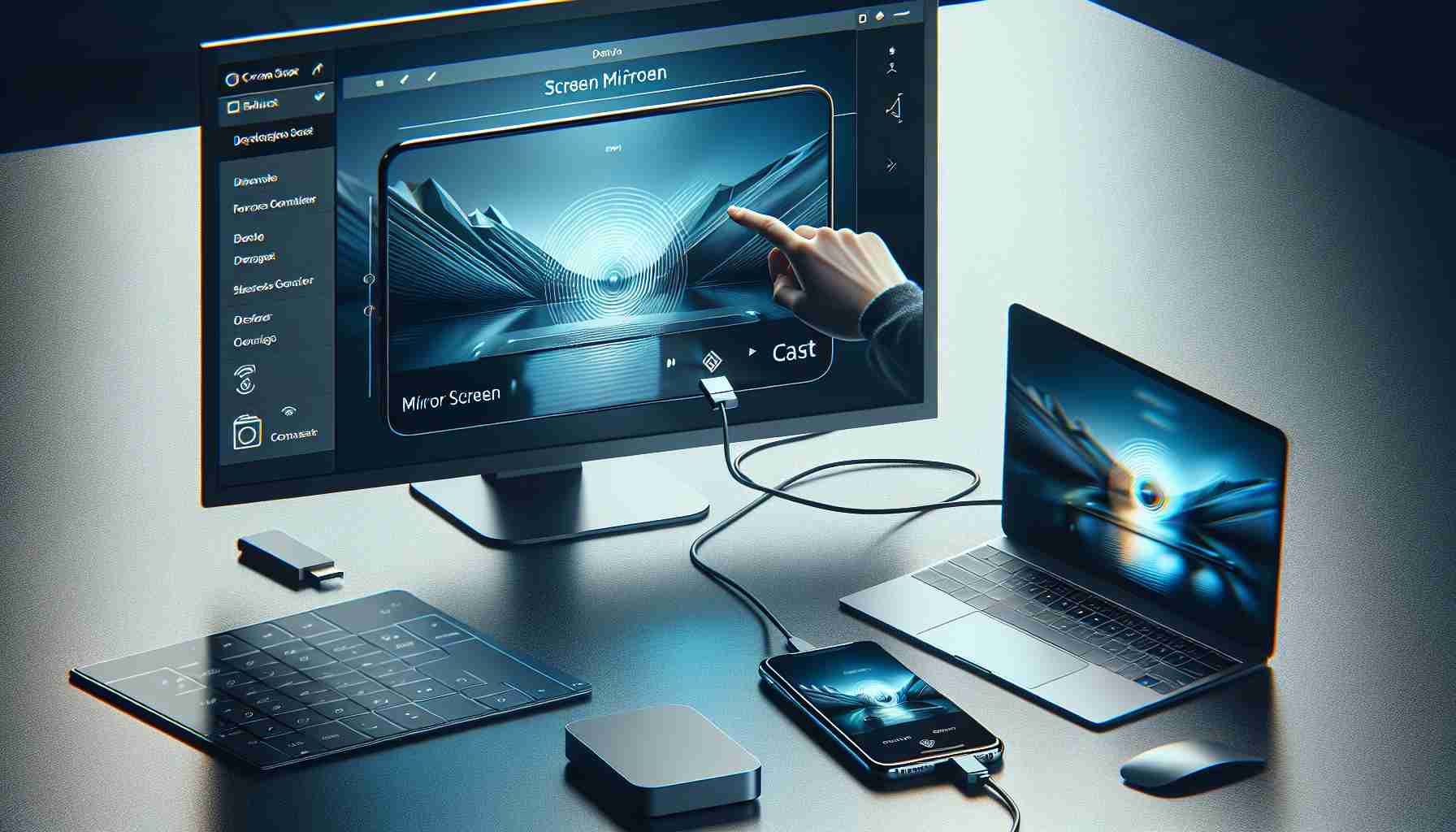Prepare Your Devices
To initiate the wireless display feature, start by ensuring both your Windows computer and smartphone are ready for seamless connection. Navigate to the search function on your Windows computer by clicking on the magnifying glass icon on the taskbar.
Find the Necessary Setting
Locate the ‘Optional Features’ in the search field letter by letter until the closest match appears. Click on the result to open the ‘Settings’ app. Then, proceed to click on ‘Show Features’ in the top right corner.
Activate the Feature
Once in the ‘Settings’ app, check the box for ‘Wireless Display’ and follow the prompts to confirm the action by clicking on ‘Next’ and ‘Install’.
Establish the Connection
Next, launch the ‘Connect to a Wireless Display’ application that you have just installed. To do this, utilize the Windows search function. Click on ‘Connect to a Wireless Display’ in the ‘Settings’ app.
Initiate Screen Mirroring
While the ‘Connect’ app is active on your Windows PC with a blue background, switch to your Android device. Swipe down from the top of the screen to access the quick settings menu.
The option to mirror your smartphone display may be labeled differently depending on your device’s manufacturer and Android version. Look for terms like ‘Cast Screen’ or ‘Screen Mirroring’. If not found in the quick settings menu, check the ‘Display’ settings.
Once you’ve enabled the function on your mobile device, your Windows computer will appear in the list of available devices for connection. Select it, and you will see a symbol in the status bar indicating that the screen content is being mirrored. Enjoy seamless screen sharing between your devices!
Additional Facts:
1. Some smart TVs offer built-in screen mirroring capabilities, allowing you to connect your devices directly to the TV without the need for additional applications or devices.
2. Streaming devices like Google Chromecast and Apple TV also enable easy screen mirroring between compatible devices.
3. Some mobile apps and software provide advanced screen mirroring options with additional features such as annotation tools and collaboration capabilities.
Key Questions:
1. What are the security implications of wirelessly mirroring screens between devices?
2. Are there limitations in terms of device compatibility when using screen mirroring?
3. How does screen mirroring affect battery life on both the transmitting and receiving devices?
Advantages:
1. Enhanced collaboration opportunities during presentations or group work.
2. Easy sharing of media content between devices for a better viewing experience.
3. Increased flexibility in displaying content on larger screens without physical connections.
Disadvantages:
1. Potential lag or delay in screen mirroring, affecting the real-time viewing experience.
2. Privacy concerns if sensitive information is shared on a mirrored screen in a public setting.
3. Compatibility issues between different devices and operating systems may lead to connection difficulties.
Related Links:
– Microsoft
– Apple
– Google
